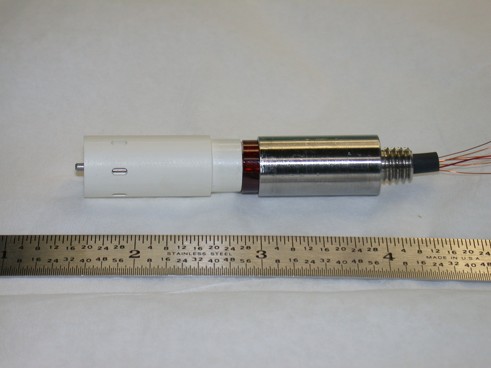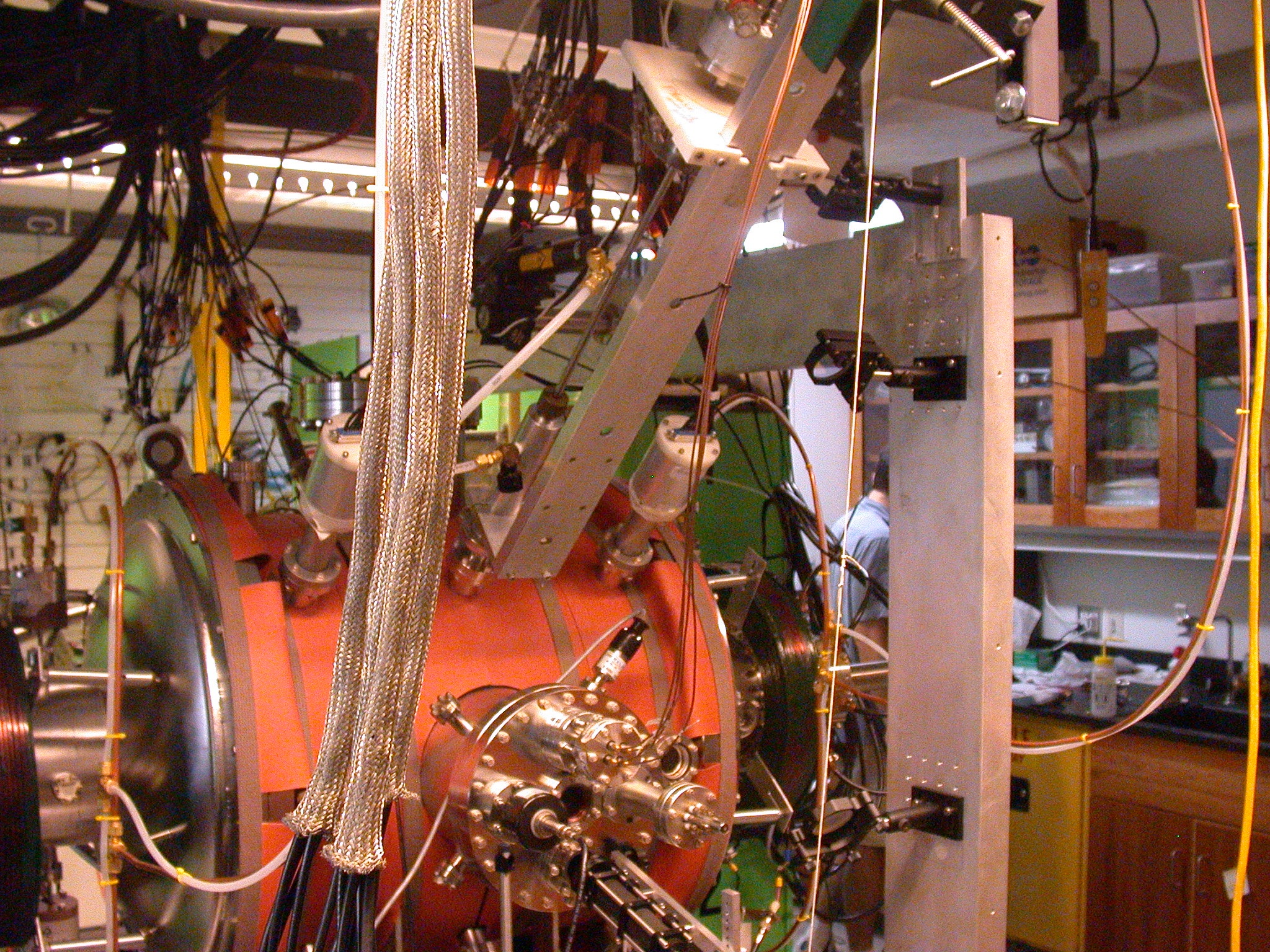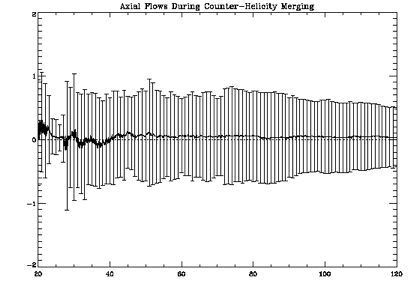Spheromak merging results in the release of magnetic energy through magnetic reconnection. Some of this becomes kinetic energy, sometimes in the form of large bidirectional jets. One of the ways to measure this flow, is with a Mach probe.
In our probe, there are 6 tungsten rods exposed through small openings in a cylindrical boron nitride (ceramic) sheath. The tungsten rods act as Ion collectors, and are attached to current sensors. We can learn about the flow by comparing the currents on opposite sides of the probe -- the upstream collector will obviously measure higher current than the downstream collector. We can determine the Mach number -- the drift velocity relative to the speed of sound in the plasma -- using the following formula Iup/Idown=ekM, where k is some calibration factor and M is the mach number.

Among other things, k depends on the size of the probe relative to the Larmor radius -- the average radius of a proton's circular orbit in the magnetic field. We used two probes, one smaller than this radius, and one larger. Here is the smaller probe.

Here is the large probe. Both had white boron nitride sheaths, but the small probe has been blackened by use.

Here the probe is mounted on a piston so that it can be moved in and out of the chamber.

The assembled probe (top middle) attached to the chamber.

To test the new probe, we ran an experiment where we fired one spheromak past it and measured the results. Then we rotated the probe 180 degrees and ran the experiment again. The results from the first were the negative of the second, as expected. Below is a graph showing the reversed waveforms.

To find k, we fired single spheromaks past the sensor and compared the ratio of Iup to Idown with the known drift velocity of the spheromak -- measured with a different sensor. We found that a single spheromak moved at about 90 kilometers per second -- about twice the speed of sound. Using this information, we were able to determine that k was 1.6 for the small probe and 2.3 for the large probe.
Data from a diagnostic run where one spheromak was shot past the probe.

For counter-helecity merging, we fire spheromaks from both guns but with oppositely oriented magnetic fields. Sometimes magnetic reconnection will result and bidirectional jets will be created. If the magnetic field were only poloidal, then we would see radial bidirectional jets only. However, there is a toroidal component of the magnetic field (see the faq), so we expected to see an azimuthal component in the jets too. We had previously observed radial jets with Ion Doppler Spectroscopy, but a local measurement was needed to observe the azimuthal component of the flow. We expected the disturbance of flow by the probe and the expected weakness of the azimuthal flow to make this measurement much harder. Our measurements showed an average of zero axial flow, as expected, and a surprisingly strong azimuthal flow.
Axial and Azimuthal flow data collected from many runs of counter-helicity merging.


This high-resolution magnetic probe is currently development -- it has not been tested yet. It consists of a quartz tube with 16 small coils inside and boron nitride end plugs. The tight spacing of the coils will give a resolution of 2.3mm and will be placed at the mid-plane of the machine where reconnection occurs.
Jason's poster
December 6, 2006 /doc@swarthmore.edu